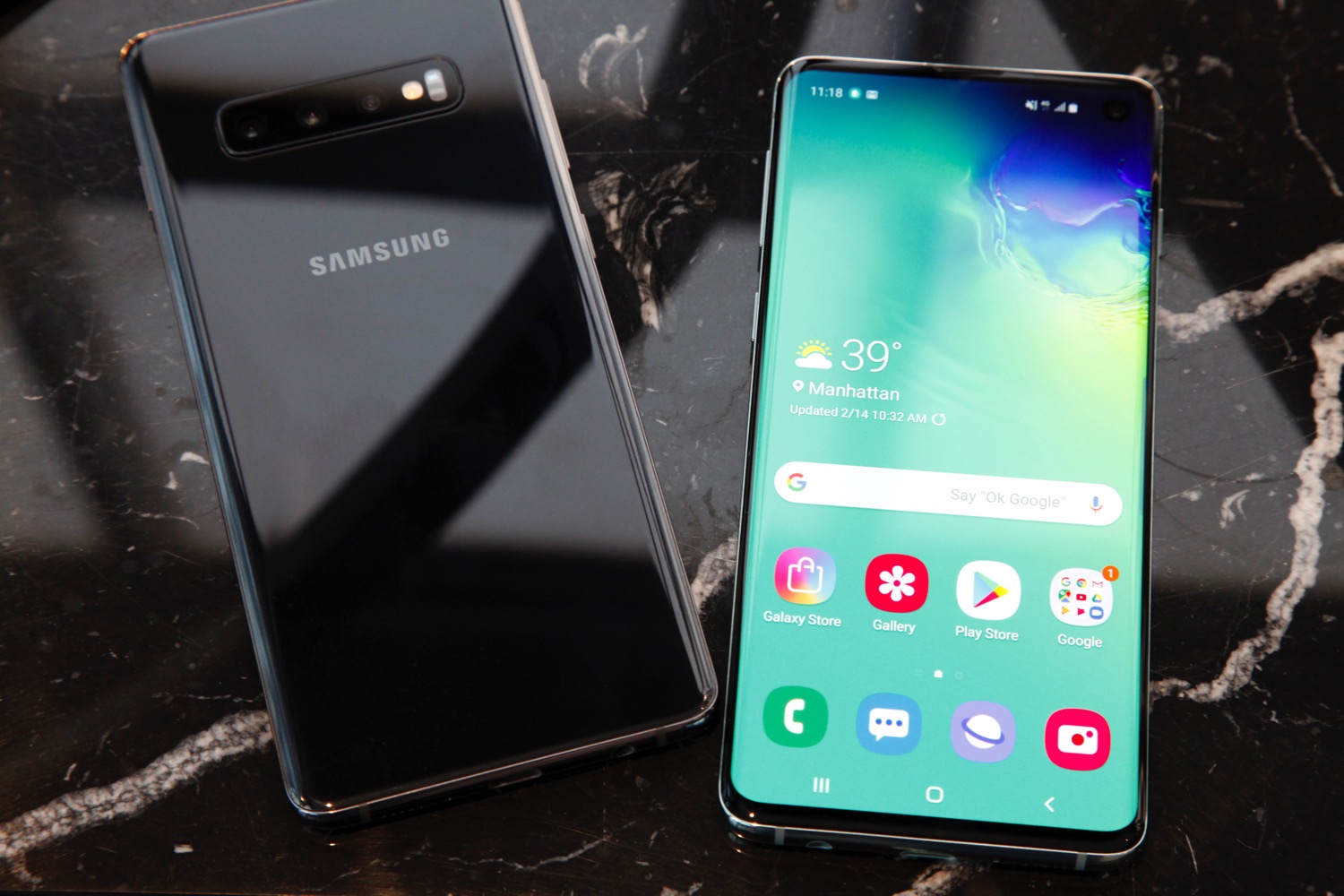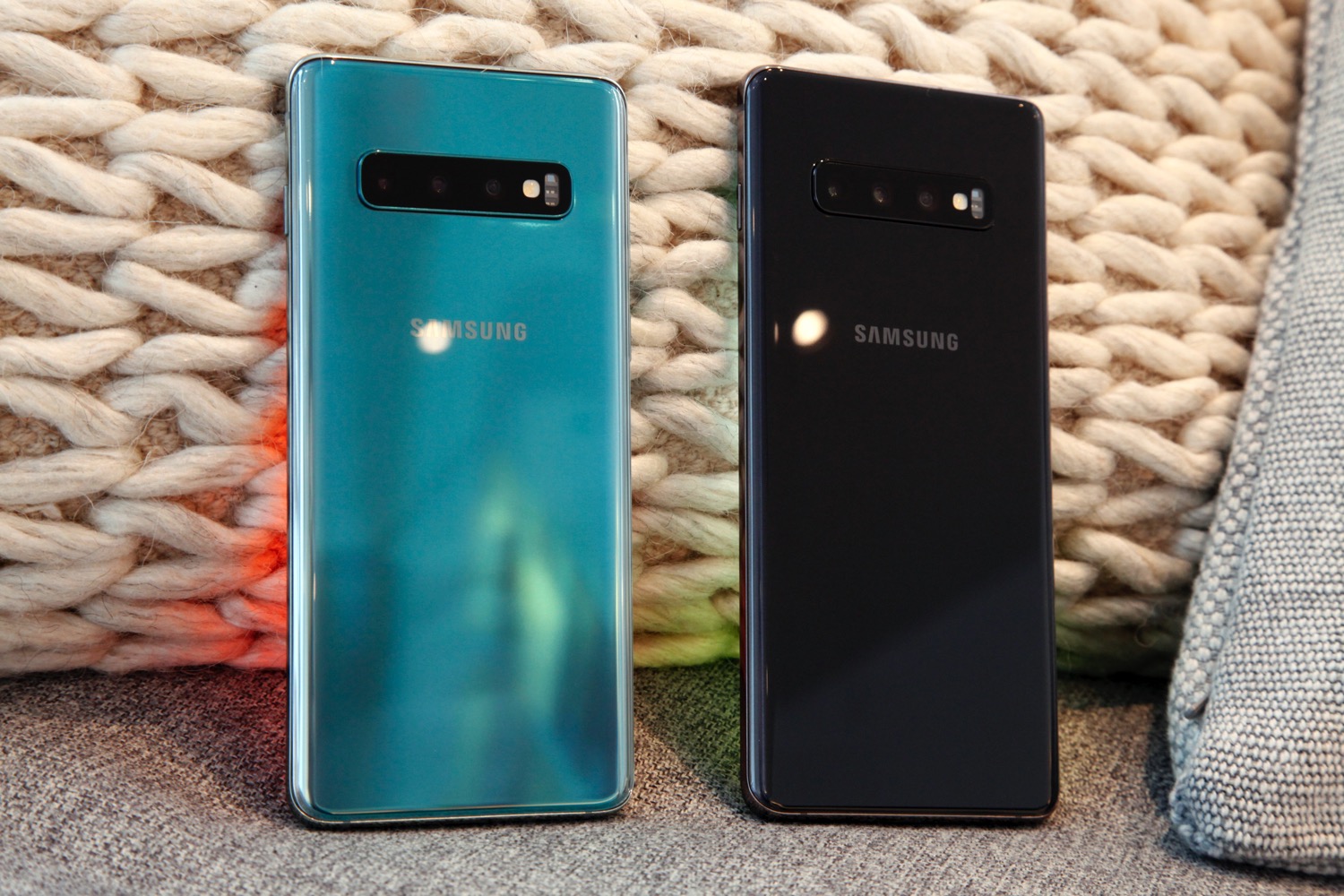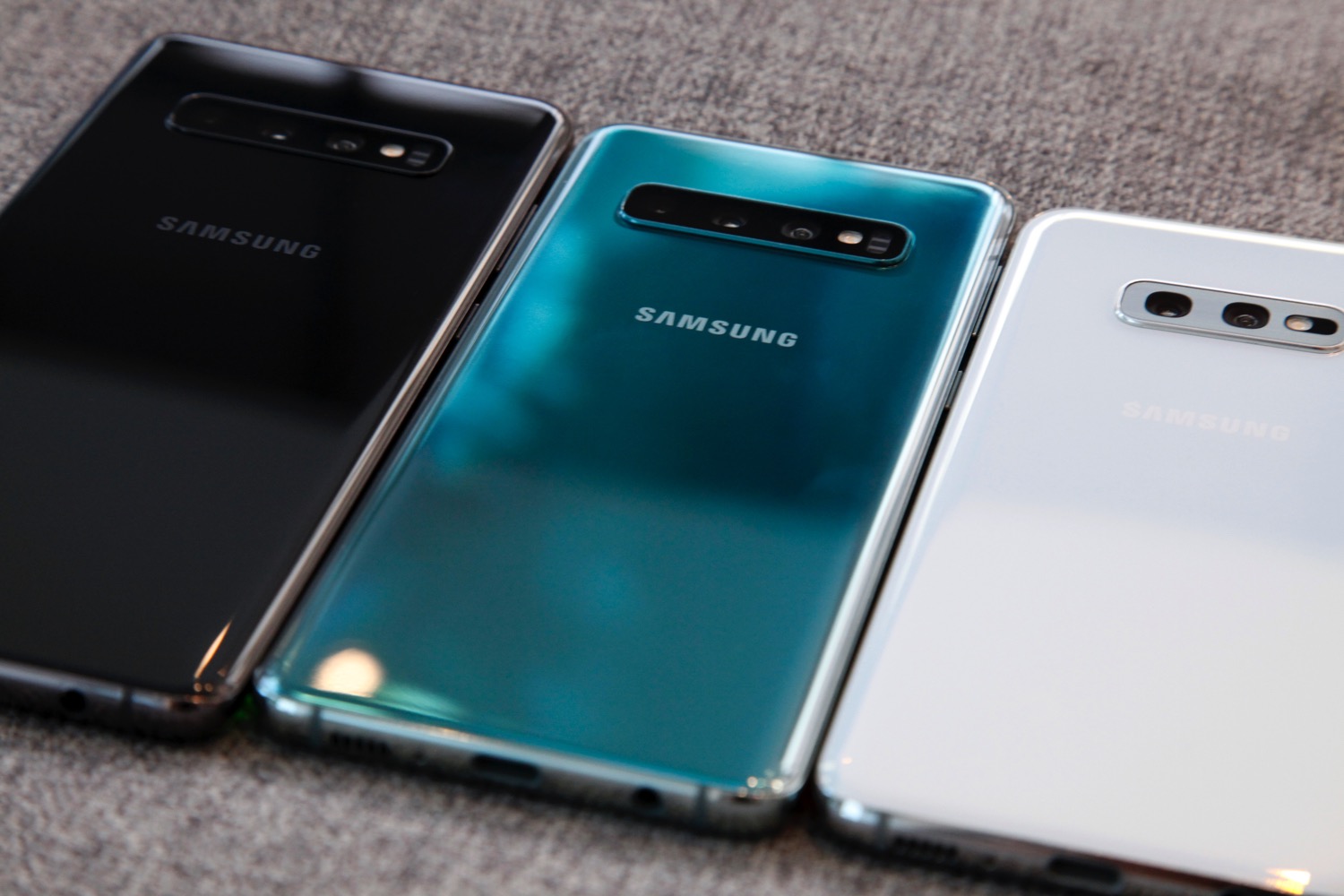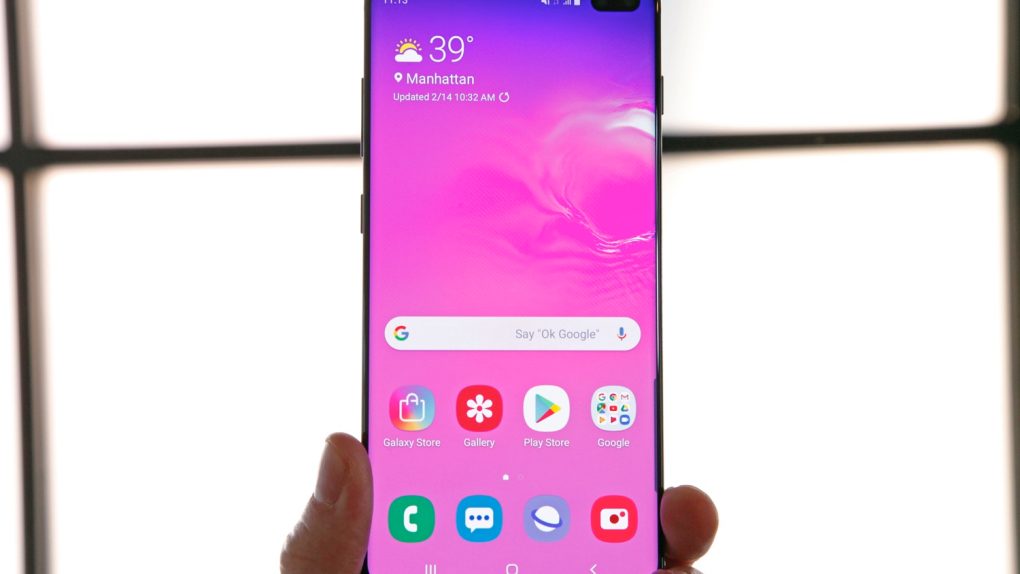Samsung on Wednesday unveiled the latest additions to its flagship smartphone lineup, and we were completely taken by surprise! Okay fine, so we already knew almost everything there possibly was to know about Samsung’s new Galaxy S10e, Galaxy S10, and Galaxy S10+. In fact, we’ve known all the most important details for months now, since Samsung couldn’t seem to keep any key specs or features under wraps this time around. Most of the important information surrounding the completely redesigned Galaxy S10 and its counterparts has been common knowledge for quite some time thanks to rumors, reports, info leaks, and even hands on photos and videos that hit the web ahead of Samsung’s Unpacked press conference on Wednesday. Of course, the devil is in the details and there are still some neat features that didn’t leak ahead of the S10 series’ debut on February 20th.
We spent some time with Samsung last week to check out the company’s fresh new flagship smartphone lineup, and we have some news that Android fans are going to appreciate. Despite the fact that all that info leaked long before today’s announcements, and despite the fact that you’ve seen the new Galaxy S10 phones in photos and on video a bunch of times already, you’re still going to be blown away by these hot new devices when you finally get your hands on them in two weeks. To tide you over until then, you’ll find everything you need to know about the new Samsung Galaxy S10e, Galaxy S10, Galaxy S10+, and Galaxy S10 5G right here in this post.
Before we get to the nitty-gritty details, let’s start with some impressions: these phones are awesome! Seriously though, Samsung has been near the top of the smartphone heap in terms of design for quite some time, but 2018 was definitely a disappointing year for fans of the company. It’s not that the Galaxy S9, Galaxy S9+, and Galaxy Note 9 featured poor designs. The problem was they featured designs that were nearly identical to the Galaxy S8, Galaxy S8+, and Galaxy Note 8 that preceded them. In fact most people couldn’t even distinguish one of Samsung’s 2017 flagship phones from its 2018 successor. That might have been fine if the S9 series or the Note 9 introduced some exciting new features, but that wasn’t the case either. Not a single new marquee feature of note was introduced on any of Samsung’s 2018 flagship phones.

Thankfully, the Galaxy S10 series is a complete reimagining of Samsung’s Galaxy S series. These tenth-anniversary Galaxy phones feature completely new designs that bring us closer than ever to the all-screen Android phone of our dreams. The bezels above and below the new Dynamic AMOLED displays are significantly smaller than they were on last year’s Galaxy S phones, though Samsung still hasn’t managed to completely eliminate the thicker bottom chin the way Apple has on the iPhone X and iPhone XS series. This shouldn’t come as too much of a surprise though, since Apple uses an expensive and complicated engineering feat to pull it off. Unlike the iPhone, however, there’s no notch on the Galaxy S10e, Galaxy S10, or Galaxy S10+.
Samsung’s new flagship handsets are among the first in the world to adopt what many refer to as hole-punch displays, and what Samsung refers to as Infinity-O displays. These screens feature outer edges that are unbroken, and instead place the phones’ front-facing cameras in a hole that’s actually cut out of the screen. The Galaxy S10e and Galaxy S10 each have a small round hole in the top-right corner of the display, while the high-end Galaxy S10+ phablet features an oblong hole that houses two front-facing camera lenses.
Is a hole-punch display really that much better than a notch? Well that’s open to debate, but it’s certainly novel and new, and it’ll be a big draw for early adopters when they consider whether or not to buy these pricey new Galaxy phones.

It should come as no surprise that the overall construction of Samsung’s new Galaxy S10 phones is quite impressive. They feel premium in the hand and the new designs look absolutely gorgeous. The edges and mid-frame are made of sturdy aluminum sandwiched between glass on the front and back. Of note, the two most expensive Galaxy S10+ models have the same Gorilla Glass 6 front sides as the rest of Samsung’s Galaxy S10 lineup, but they have upgraded ceramic backs that are more scratch-resistant and come in two exclusive colors.
As for performance, I was only able to spend about an hour with the phones during my meeting with Samsung, but I was certainly impressed with what I saw. The phones feature next-generation 7nm or 8nm processors depending on region, along with plenty of RAM, and they sport numerous other upgraded components as well. Combine all that with Android 9.0 Pie and Samsung’s new One UI interface, and you’ve got a screamer of a smartphone that can hold its own against anything else on the market.

I’ll cover performance and features more extensively in my full review, but there are a few cool things that I definitely want to highlight here in this preview:
- Samsung’s new Dynamic AMOLED displays are absolutely gorgeous. Even after just an hour with the new Galaxy S10e, Galaxy S10, and Galaxy S10+, the difference in quality was noticeable when I went back to using my iPhone XS.
- The “screen-to-window” ratio on Samsung’s Galaxy S10+ is 93.1%, and it’s even higher on the Galaxy S10 since it has a smaller hole for the selfie camera. That’s definitely impressive, but note that Samsung uses the term screen-to-window and not screen-to-body. What’s the difference? Screen-to-window only covers the glass portion of the phone’s face, not the metal edges.
- The in-display ultrasonic fingerprint sensor is fast and far more secure than traditional optical sensors. It works quite well… and yes, it works just fine with a screen protector. I confirmed with Samsung that the company has a standard accessory certification program in place for third-party Galaxy S10 screen protectors, so forget all the weird rumors you heard ahead of today’s event. Of note, there is no more iris scanner on any of the new Galaxy S10 phones, only a regular face unlock feature that uses the selfie cam.
- Samsung says all three Galaxy S10 models will offer at least 24 hours of battery life! They also support Fast Wireless Charging 2.0, which can charge a phone wirelessly almost as fast as a wired charger.
- Feeling generous? A new Wireless PowerShare feature lets you charge any Qi compatible device with your Galaxy S10, including your friends’ smartphones.
- The new triple-lens camera system on the Galaxy S10 and Galaxy S10+ seems very impressive, though I obviously haven’t been able to test it too much just yet. There’s also a “Bright Night” that Samsung says should deliver low-light photography on par with Google’s Night Sight feature on its Pixel phones. It captures multiple frames at different exposures to create a single merged image.
- There are a bunch of nifty new AI features on the Galaxy S10 series, but my favorite so far pertains to app launches. The S10 has an “Intelligent Performance” feature learns your patterns and it will actually pre-load apps in the background around the time of day you launch them. That way, they’re lightning fast to open and the overall speed of the user experience feels much faster. The phone will also close them at times it thinks you’re not likely to use them, freeing up resources and potentially improving battery life in the process.
With all that out of the way, let’s talk about pricing and availability. These phones are going to be expensive indeed, but it should be noted that the Galaxy S10 and S10+ have starting prices that are actually cheaper than their iPhone XS and iPhone XS Max counterparts. Here are the starting prices:
- Galaxy S10e (6GB/128GB): $749.99
- Galaxy S10 (8GB/128GB): $899.99 (free Galaxy Buds with pre-order)
- Galaxy S10+ (8GB/128GB): $999.99 (free Galaxy Buds with pre-order)
Prices go up from there as you would expect. The Galaxy S10e also has an 8GB/256GB option, while the Galaxy S10 jumps up to 8GB/512GB. Meanwhile, the Galaxy S10+ can be had with 8GB of RAM and 512GB of storage or 12GB of RAM and 1TB of storage, and both those models come with special upgraded ceramic backs instead of glass.
As for availability, all three new Galaxy S10 models will be available for pre-order beginning tomorrow, February 21st. The official Galaxy S10 release date is scheduled for March 8th, which is when pre-orders will be delivered and when the phones will launch in stores. A fourth model called the Galaxy S10 5G will have a larger 6.7-inch display, a 4,500 mAh battery, and a quadruple-lens camera system on the back. It’s set to be released as a Verizon exclusive sometime in the second quarter, and then on the three other major wireless carriers later in the second quarter. Samsung hasn’t yet shared pricing or firm release dates for the Galaxy S10 5G.

Okay… time for some specs!
Galaxy S10e
- Dimensions: 142.2 x 69.9 x 7.9 mm (150 g)
- Display: 5.8-inch, Full HD+ Flat Dynamic AMOLED, 19:9 (522 ppi)
- Rear camera
- 16 MP (Ultra Wide/F2.2), FF
- Dual Pixel 12 MP OIS (Wide/F1.5/F2.4), AF
- Front camera
- Dual Pixel 10 MP AF (F1.9)
- Memory
- 6GB + 128GB
- 8GB + 256GB
- MicroSD slot (up to 512GB)
- Battery: 3,100 mAh (Typical)
- Charging: Fast Wireless Charging 2.0, Wireless PowerShare
- Sensors: Accelerometer, Barometer, Gyro Sensor, Compass, Magnet (Hall) Sensor, Proximity Sensor, RGB Light Sensor
- Security: Capacitive Fingerprint Scanner, Face Recognition
- Processor: Octa-core, 7/8 nm process
- Network: Up to 7 CA, LTE Cat.20
Galaxy S10
- Dimensions: 149.9 x 70.4 x 7.8 mm (157 g)
- Display: 6.1-inch Quad HD+ Curved Dynamic AMOLED, 19:9 (550 ppi)
- Rear camera
- 16 MP (Ultra Wide/F2.2), FF
- Dual Pixel 12 MP OIS (Wide/F1.5/F2.4), AF
- 12 MP OIS (Tele/F2.4), AF
- Front camera
- Dual Pixel 10 MP AF (F1.9)
- Memory
- 8GB + 128GB
- 8GB + 512GB
- MicroSD slot (up to 512GB)
- Battery: 3,400 mAh (Typical)
- Charging: Fast Wireless Charging 2.0, Wireless PowerShare
- Sensors: Accelerometer, Barometer, Gyro Sensor, Compass, Magnet (Hall) Sensor, Proximity Sensor, RGB Light Sensor, HR Sensor
- Security: Embedded Ultrasonic Fingerprint Scanner, Face Recognition
- Processor: Octa-core, 7/8 nm process
- Network: Up to 7 CA, LTE Cat.20
Galaxy S10+
- Dimensions: 157.6 x 74.1 x 7.8 mm (175 g, or 198 g for the ceramic models)
- Display: 6.4-inch Quad HD+ Curved Dynamic AMOLED, 19:9 (438 ppi)
- Rear camera
- 16 MP (Ultra Wide/F2.2), FF
- Dual Pixel 12 MP OIS (Wide/F1.5/F2.4), AF
- 12 MP OIS (Tele/F2.4), AF
- Front camera
- Dual Pixel 10 MP AF (F1.9)
- 8 MP AF (Depth/F2.2)
- Memory
- 8GB + 128GB
- 8GB + 512GB (Ceramic version only)
- 12GB + 1TB (Ceramic version only)
- MicroSD slot (up to 512GB)
- Battery: 4,100 mAh (Typical)
- Charging: Fast Wireless Charging 2.0, Wireless PowerShare
- Sensors: Accelerometer, Barometer, Gyro Sensor, Compass, Magnet (Hall) Sensor, Proximity Sensor, RGB Light Sensor, HR Sensor
- Security: Embedded Ultrasonic Fingerprint Scanner, Face Recognition
- Processor: Octa-core, 7/8 nm process
- Network: Up to 7 CA, LTE Cat.20
Galaxy S10 5G
- Dimensions: 162.6 x 77.1 x 7.94mm (198 g)
- Display: 6.7-inch Quad HD+ Curved Dynamic AMOLED, 19:9 (505 ppi)
- Rear camera
- 16 MP (Ultra Wide/F2.2), FF
- Dual Pixel 12 MP OIS (Wide/F1.5/F2.4), AF
- 12 MP OIS (Tele/F2.4), AF
- 3D Depth: hQVGA
- Front camera
- Dual Pixel 10 MP AF (F1.9)
- 3D Depth: hQVGA
- Memory
- 8GB + 256GB
- No microSD slot
- Battery: 4,500 mAh (Typical)
- Charging: Fast Wireless Charging 2.0, Wireless PowerShare
- Sensors: Accelerometer, Barometer, Gyro Sensor, Compass, Magnet (Hall) Sensor, Proximity Sensor, RGB Light Sensor, HR Sensor
- Security: Embedded Ultrasonic Fingerprint Scanner, Face Recognition
- Processor: Octa-core, 7/8 nm process
- Network: Up to 7 CA, LTE Cat.20, Enhanced 4×4 MIMO, Up to 7CA, LAA, LTE Cat.20
- 2.0Gbps download, 150Mbps Upload + None Standalone (NSA), Sub6 / mmWave (28G, 39G)








